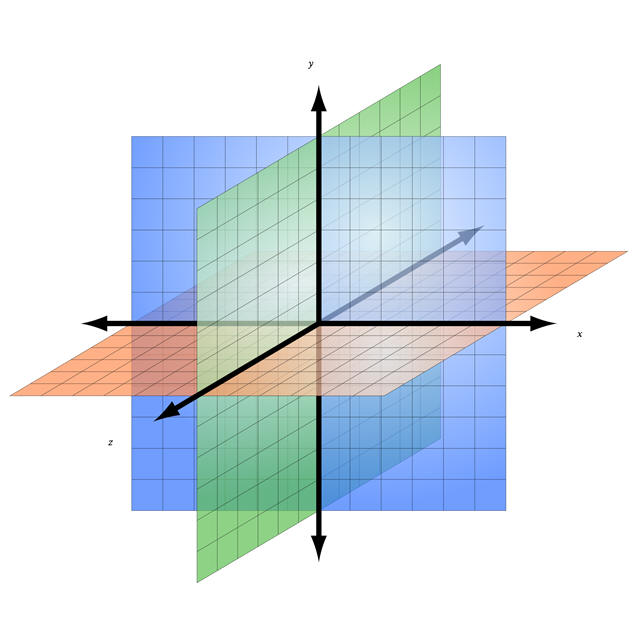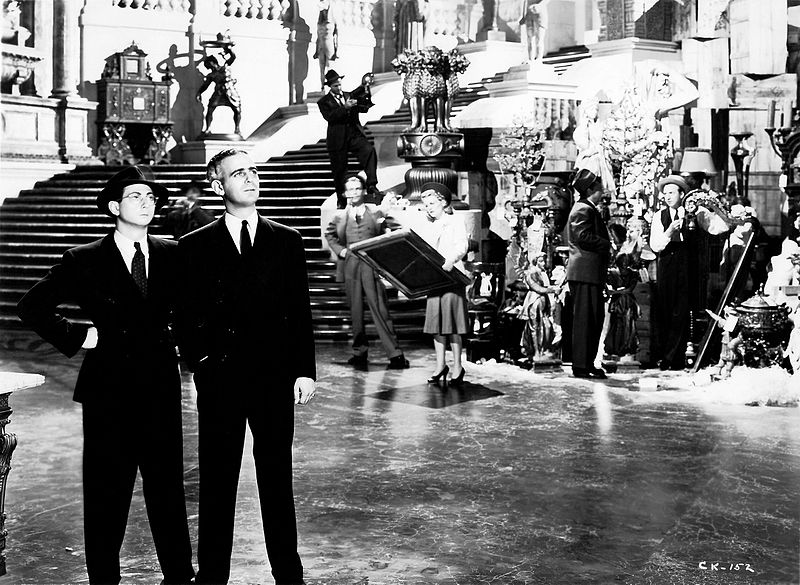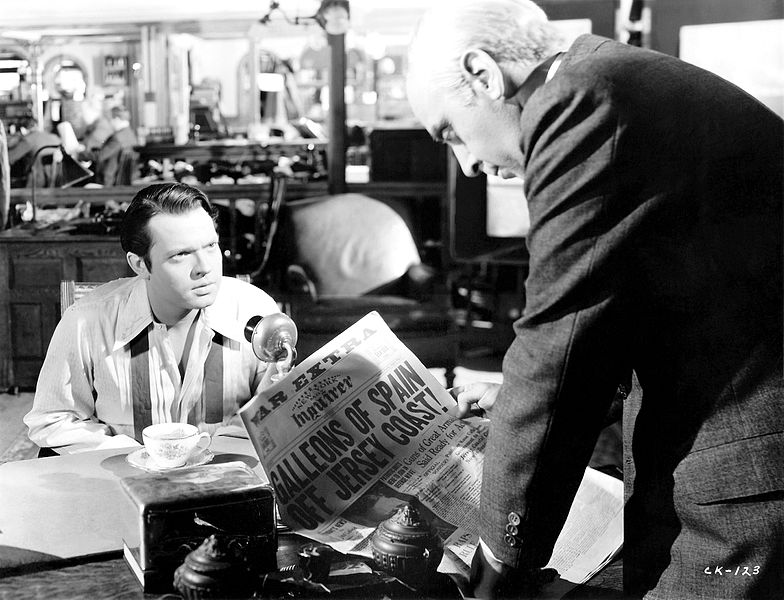
Film language
Schede di sintesi - Outlines
 |
Il linguaggio cinematografico Film language Schede di sintesi - Outlines |
Fuoco e profondità di campo |
Focus and depth of field |
||||||
| La percezione
della profondità Come si è già visto, lo spazio inquadrato dalla mdp è in realtà tridimensionale (1), possiede cioè un volume in cui si situano diversi piani di profondità, a seconda della distanza tra la mdp e gli elementi messi in scena: si può parlare così di primo piano, piani intermedi, sfondi (si veda lo Schema Scala dei campi). Teniamo presente che i processi di elaborazione mentale delle immagini implicano un continuo scorrere degli occhi non solo in larghezza (da una parte all'altra dello schermo), ma anche in profondità. Gli stessi processi sottolineano il potere degli elementi (figure, oggetti) posti frontalmente nell'attirare la nostra attenzione (e la negazione delle posizioni frontali nell'inquadratura è uno dei modi per "sfidare" i canoni "classici" della composizione). |
 (1) I tre piani della composizione: il piano dell'inquadratura (azzurro), "la geografia" del piano fotografico (arancione) e il piano della percezione di profondità (verde). The three planes of composition: the frame plane (blue), the "geography" of the photographic plane (orange) and the plane of depth perception (green). Ispirato da/Inspired by Monaco 2000 (*). |
The perception of depth As we have already seen, the space filmed by the camera is three-dimensional (1), i.e. it has a volume with different depth planes, depending on the distance between the camera and the elements which are part of the "mise-en-scene": we can thus refer to foreground, middle ground and background (see the Outline Shot scale). Our mind processes images by having our eyes continually scan the frame not only across its width, but also in its depth. The same cognitive processes are subject to the power of frontality: elements (figures, objects) positioned frontally tend to attract our attention (and denying frontality is one of the ways in which "classical" framing can be challenged). |
|||||
|
Il fuoco Tecnicamente, il fuoco può essere definito come "il grado in cui i raggi di luce provenienti dalla stessa parte di un oggetto attraverso diverse parti dell'obiettivo convergono sullo stesso punto del fotogramma, creando contorni [più o meno] marcati" (Thompson e Bordwell 2010)(**). La profondità di campo si ha quando più piani risultano a fuoco nello stesso momento. Mantenere "a fuoco" o "fuori fuoco" più piani dipende innanzitutto, oltre che dalla distanza reale tra la mdp e il soggetto/i soggetti, da un certo numero di variabili fotografiche, quali: - la sensibilità della pellicola; - la luce presente sulla scena; - l'apertura del diaframma; - la luminosità e la lunghezza focale dell'obiettivo usato (se si tratta, ad esempio, di un obiettivo a focale corta, normale, lunga (teleobiettivo) o di uno zoom, che permette una continua variazione della lunghezza focale. |
Focus Technically, focus can be defined as "the degree to which light rays coming from the same part of an object through different parts of the lens converge at the same point on the film frame, creating [more or less] sharp outlines" (Thompson and Bordwell)(**). Depth of field is achieved when several planes result "in focus" at the same time. Keeping "in focus" or "out of focus" several planes depends, to start with, in addition to the real distance between the camera and the subject(s), on a certain number of photographic variables, such as: - film speed (sensitivity); - the light on the scene; - diaphram aperture; - the brightness and focal length of the lens (e.g. short (wide-angle) rather than middle (normal) or long (telephoto) lens). A zoom lens, on the other hand, allows a continuous variation of focal length. |
||||||
Si possono così ottenere inquadrature in cui tutti i piani dell'immagine sono a fuoco (deep focus)(2) oppure immagini in cui risultano a fuoco solo i piani più vicini alla mdp (shallow focus)(3), restringendo così la profondità di campo. Ovviamente è possibile un'ampia gamma di profondità di campo, con differenti funzioni e significati: per esempio, la nitidezza dell'immagine (sharp focus) tende a sottolineare la verosimiglianza. Deep focus non va confuso con deep space (4), cioè una messa in scena in cui esiste una distanza notevole tra il piano più vicino alla mdp e quello più lontano, indipendentemente da quanti e quali piani siano effettivamente a fuoco. Si parla, analogamente, di shallow space (5). Quando si alternano, anche molto bruscamente, immagini a fuoco e fuori fuoco dello stesso fotogramma (per es. dal primo piano allo sfondo o viceversa), si parla di racking focus. |
 (2)  (3) Da/From Quarto potere/Citizen Kane di/by Orson Welles, USA 1941  (4)  (5) |
We can obtain frames in which all planes are in focus (deep focus)(2) or frames in which only the planes closer to the camera are in focus (shallow focus)(3), thus restricting depth field. A wide range of depths of field is obviously possible: for example, an image in sharp focus tends to underline the verisimilitude of the scene. Deep focus is not to be confused with deep space, i.e. a mise-en-scene where there is a remarkable distance between the plane closest to the camera and the one farthest from it, irrespective of how many and which planes are actually in focus. When the area of focus is shifted, sometimes suddenly or abruptly, from an image in focus to an image out of focus within the same shot (e.g. from foreground to background or viceversa), the result is called racking focus. |
|||||
| (*) Monaco J.
2000. How to read a film. Oxford University Press, New York. (**) Thompson K. & Bordwell D. 2010. Film history: An introduction. Third edition. McGraw Hill, New York. |
|||||||
|
|||||||